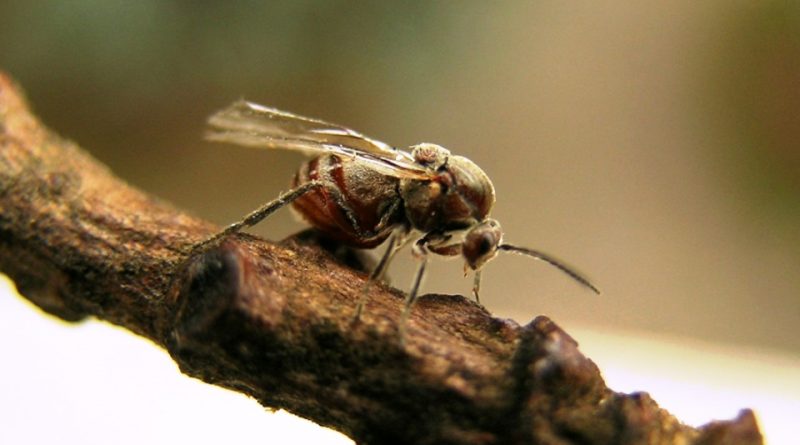Andricus caputmedusae
Andricus caputmedusae
Andricus caputmedusae (Andricus caputmedusae Hartig, 1843) is a small hymenoptera belonging to the Cynipidae family.
Systematic –
From a systematic point of view it belongs to the Eukaryota Domain, Animalia Kingdom, Sub-Kingdom Eumetazoa, Superphylum Protostomia, Phylum Arthropoda, Subphylum Tracheata, Superclass Hexapoda, Insecta Class, Subclass Pterygota, Cohort Endopterygota, Superorder Oligoneoptera, Section Hymenopterea, Hymenoptera subterma, Hymenoptera subterma. Cynipoidea, Family Cynipidae and therefore to the Genus Andricus and to the Species A. caputmedusae.
The terms are synonymous:
– Cynips caputmedusae.
Geographical Distribution and Habitat –
Andricus caputmedusae is a species present in Europe, with a distribution similar to other Cynipids, from Portugal to Macedonia, Greece (including islands) and other European countries, where it lives on Quercus x haynaldiana, infectoria and subsp. veneris, lusitanica, Mongolian, petraea, pubescens, pyrenaica, robur and occasionally Quercus cerris, dalechampii, frainetto, hartwissiana.
Morphology –
Andricus caputmedusae is a small hymenoptera of a few millimeters, with a more or less intense ocher-brown body and with horizontal streaks identifiable at the abdomen level.
The wings are transparent and with perceptible veins.
Legs and antennae are long and the sexual dimorphism between male and female is mainly linked to the presence of the ovipositor in females.
Of this insect, 3 – 4 mm long, the sexual generation is not known; perhaps the species is completely parthenogenetic.
Aptitude and biological cycle –
The female of Andricus caputmedusae lays eggs in the tissues of host plants where it generates the galls in which the larvae live and feed.
The larvae lead endophytic life and develop within the characteristic galls; these represent the most macroscopic and evident distinctive element, often typical of the species.
The galls are characteristic and present in the terminal part of the twigs or in their insertion point on another branch. The galls initially consist of a rusty-colored ovoid-discoidal formation, with a diameter of about 40 mm; on the surface of the galls many filaments are produced, intensely branched, of an ocher-greenish color that twist around each other and around the central disk, becoming dry and leathery and leathery in consistency. Eventually the surface takes on a mossy “hedgehog” appearance, with a diameter of up to 4-6 cm, which makes them unmistakable.
Ecological role –
The galls produced by Andricus caputmedusae, as for those produced by other cinipids, are a place of life, nutrition and growth for other small insects or mammals.
No pest management is carried out both for their low danger and for the technical difficulties of carrying out the interventions, considering the type of host plants.
Guido Bissanti
Sources
– Wikipedia, the free encyclopedia.
– Russo G., 1976. Agricultural entomology. Special Part. Liguori Editore, Naples.
– Tremblay E., 1997. Applied entomology. Liguori Editore, Naples.
Photo by Emma Silviana Mauri.
Source:
– https://www.actaplantarum.org/forum/viewtopic.php?t=34523


